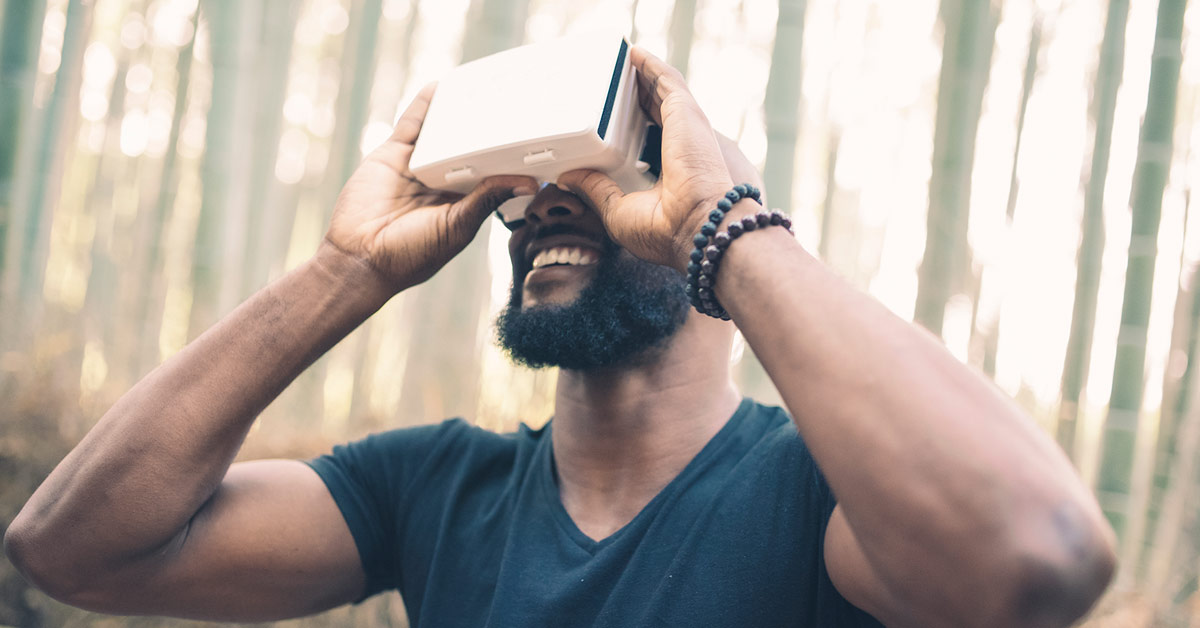
Do you have patients who could use some extra help in dealing with dental anxiety? Or patients who would benefit from a distraction when undergoing a procedure a little more involved than a typical hygiene appointment?
What if you could offer them an experience that “removed” them from the source of their anxiety? Let them enjoy a 45-minue trip to the beach or stroll down a wooded path? Would you do it?
As virtual reality technology has grown from the stuff of science fiction movies to something everyday consumers can use in their homes, different applications of the technology are being considered. And one of these applications is as a coping mechanism for people’s fears and anxieties, which leaves dental offices with an opportunity to differentiate themselves and change the way patients experience dental appointments.
But does it really work?
In one study done at Calgary College, the ability of virtual reality treatment to lower stress and anxiety levels was put to the test against more than 80 college students on the precipice of exam week. With their stress levels running at an all-time high they were asked to quantify some statements about their current mood and feelings (“I am worried” or “I feel at ease” and so on) on a scale of “not at all” to “very much so.” Not surprisingly, many of the pre-virtual reality assessments displayed a group of participants who were clearly experiencing anxiety.
For the treatment the students had the option to select one of a few calming environments, including a beach in California, a Japanese Zen garden and a mountain. They spent time “walking around” in these environments for a set period of time before being given them same set of statements to self-evaluate again.
One student who participated in the study checked “not at all” when prompted to give her current feelings on whether she was nervous, jittery or confused. And the results from the assessments from other participants showed promising results, too.
While research on the positive effects of virtual reality treatment is still ongoing and only a few larger scale treatments plans with the technology have been rolled out, it’s not hard to see how this could help patients with dental anxiety. While in your office their fears might make them almost immune to the efforts you’ve taken to make it a calm, safe space, because it’s still very clearly a dental office. If you could give them a way to escape that source of anxiety through virtual reality, you’d be setting them up to have a much more relaxing experience at that appointment and when they come in for future visits.
And there’s already at least one office that’s ahead of the curve, putting the theory to the test.
Lake Minnetonka Dental in Minnesota has already started testing virtual reality as a way to help relax their patients while performing various procedures. One patient, while getting a routine filling, was also getting some much needed relaxation on a beach in New Zealand—a far cry from the usual sites one gets while reclined in a dental chair.
Minnetonka Dental’s Dr. Bryan Laskin, wanted to test the effects of virtual reality on patients after listening to a virtual reality conference and studying its correlation to pain management. Up until this point there have only been a few ways to ensure patients stayed relaxed and pain free during procedures—local anesthetics, nitrous oxide or general anesthesia—and Dr. Laskin saw a potential to give patients another option. He thinks of it as a “virtual nitrous.”
Virtual reality could completely alter the patient experience as it’s known today by transforming it from a clinical, “have to do” experience to one that patients look forward to. And, fortunately, the cost to test virtual reality for your office is minimal, with some virtual reality headsets that connect to cellphones being sold for under $100.
Take a moment to consider how your patients might respond to virtual reality during their appointments. By offering them a new way to ease dental anxiety you’ll create more trust with the patient and a greater chance that they’ll return to you for dental care in the future. And for patients who don’t necessarily fear the dentist but don’t love it either, you’ll simply provide a way to take their experience from merely satisfactory to outright enjoyable.
Dentist Embraces Virtual Reality for Patients. (2017). Retrieved from http://www.wfmynews2.com/news/health/dentist-embraces-virtual-reality-for-patients/421910829
Beyond entertainment: Virtual reality to ease anxiety no longer just sci-fi stuff. (2016). Retrieved from: http://www.cbc.ca/news/technology/beyond-entertainment-virtual-reality-to-ease-anxiety-no-longer-just-sci-fi-stuff-1.3896459
Can Virtual Reality Help with Anxiety? (2016). Retrieved from: http://www.huffingtonpost.co.uk/alex-handy/can-virtual-reality-help-_b_11992804.html

